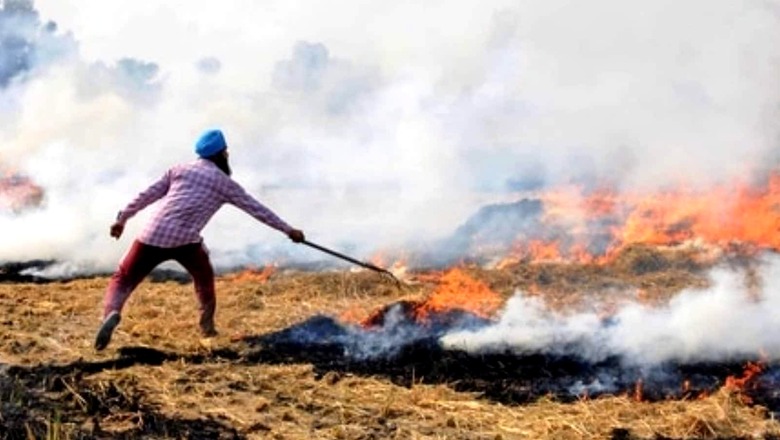
views
Just when the national capital was breathing easy with relatively clean post-Diwali air, the Commission for Air Quality Management (CAQM) for Delhi-NCR and adjoining states on Thursday evening raised an alarm over the increasing incidents of crop stubble burning in neighbouring Punjab, terming it a “serious concern”. There has been a 9% rise in the number of incidents so far compared to last year, it said.
Between September 15 and October 26 this year, total paddy residue burning events reported in Punjab are 7,036, compared to 6,463 for the same period last year, as per the standard protocol developed by ISRO.
“This means a significant increase of about 9% in the number of farm fire events. As per the satellite remote sensing data, up to October 24, only about 39% of sown area in Punjab had been harvested and thus rising number of fire events is an alarming situation,” a note issued by the CAQM to these states read.
Six districts in Punjab — Amritsar, Firozpur, Gurdaspur, Kapurthala, Patiala, and Tarn Taran — have been identified as the burning hotspots yet again with about 70% of farm fires during the current paddy harvesting season being reported just from these places.
“These Districts account for 4,899 cases as against a total of 7,036 incidents in Punjab. These traditional six hotspot districts had also accounted for about 65% of the total burning incidents reported during the last year for the same period,” the air quality panel said in the note.
While delayed and unseasonal rainfall in the first week of October held up the harvest, it is only now that the fields are being cleared and thus a spike in the number of incidents.
“Out of a total 7,036 reported cases, 4,315 stubble burning incidents were reported during the last six days alone, i.e., about 61%,” said a senior official.
Every winter, smoke from paddy stubble burning in neighbouring Punjab and Haryana travelling to Delhi-NCR combined with its own local pollution and typical winter conditions that trap pollutants trigger a spike in overall pollution levels, resulting in smog episodes, making it difficult even for healthy people to breathe.
“Considering the present situation and spike in the stubble burning incidents, the commission has again taken the matter up with the Punjab government’s chief secretary for effective implementation of an action plan including all strategies for stubble management and appropriate actions in all reported cases of farm fires,” the note said.
According to officials, the commission has held nine meetings with representatives of the Punjab government from time to time regarding various issues related to stubble burning, including five meetings with the chief secretary.
In Haryana, however, the total number of farm fire events reported between September 15 and October 26 this year is 1,495, compared to 2,010 for the same period last year. There is about a 26% reduction in paddy residue burning events in Haryana so far during the current year, as per CAQM data.
Read all the Latest India News here




















Comments
0 comment